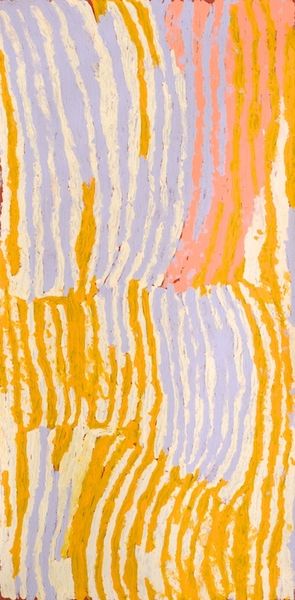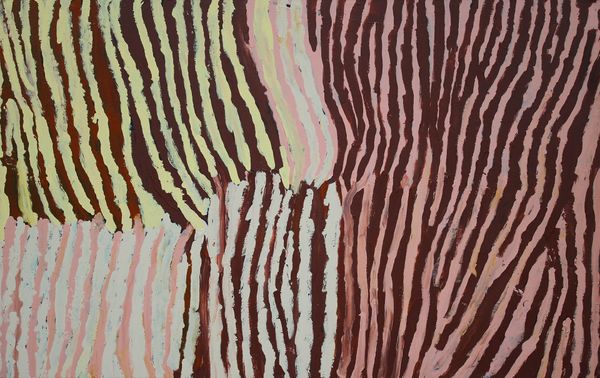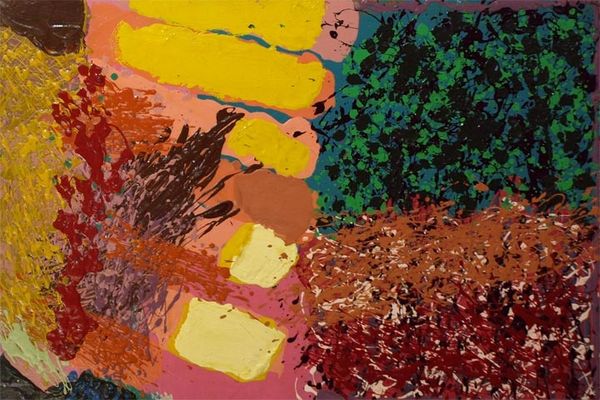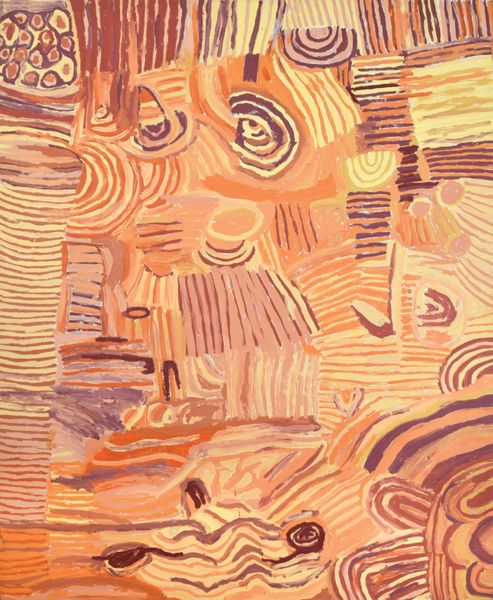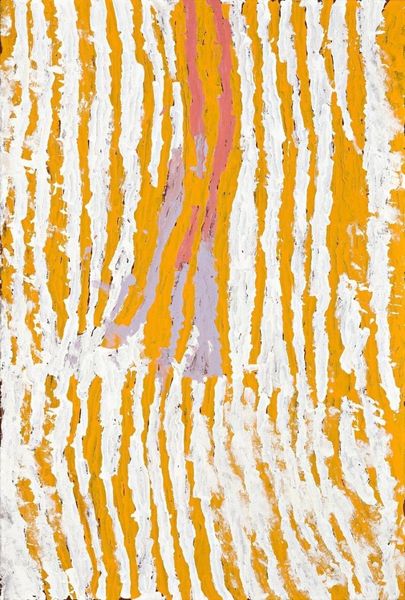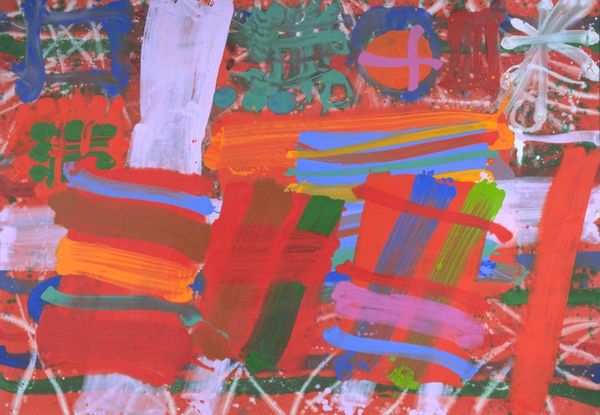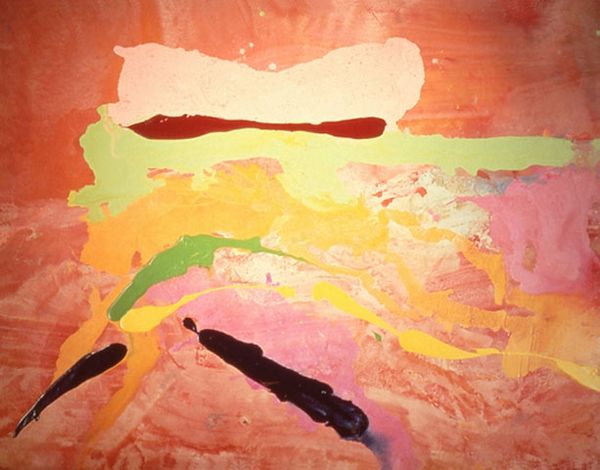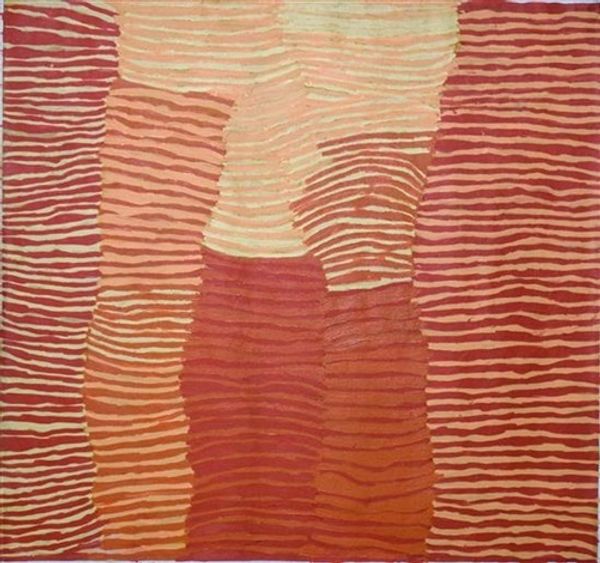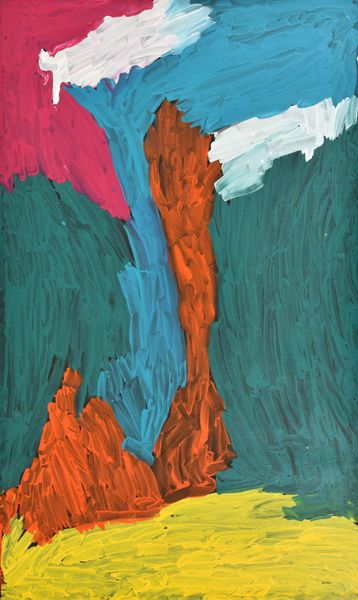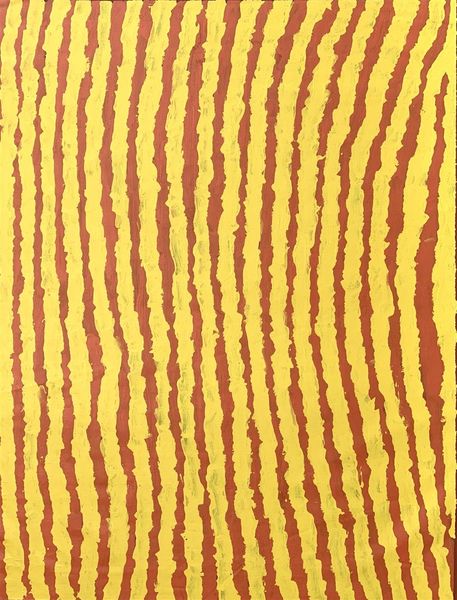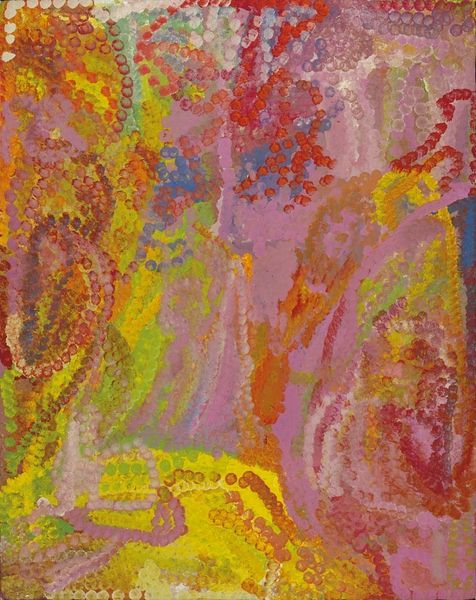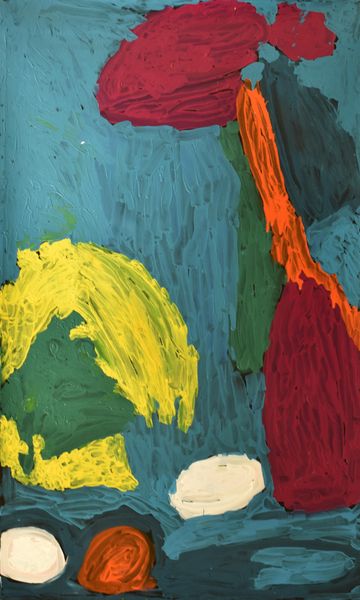
painting
#
painting
#
geometric pattern
#
abstract pattern
#
minimal pattern
#
organic pattern
#
abstraction
#
pattern repetition
Copyright: Makinti Napanangka,Fair Use
Editor: So this is “Hairstring,” an acrylic painting by Makinti Napanangka. I find it incredibly vibrant, especially with the contrast between the warm browns and yellows, and the cooler pinks and greens. What draws your eye in this piece? Curator: I'm fascinated by how Napanangka utilizes seemingly simple geometric patterns. It is so deceiving, because they aren’t purely abstract designs. To me, those repeating lines and circles act as symbolic stand-ins; in essence, they represent layers of cultural memory. Can you see how these marks might serve as coded narratives passed down through generations? Editor: I think so. It's interesting how something abstract can hold so much meaning. Is there a connection between the title, "Hairstring," and what the image represents? Curator: Exactly. “Hairstring” can signify both a material object and the connections it represents. Hairstring, traditionally made from human hair, held ritual significance, particularly for ceremonies. Consider then, the lines and dots, and how these marks become metaphors for interconnectedness: kinship ties, ancestral stories, and the very fabric of Aboriginal life. Does seeing it this way change your initial interpretation? Editor: Definitely. I initially saw patterns, but now I see stories woven within them, literally, like threads of hair. It's a lot deeper than just abstract art. Curator: Precisely. The beauty here lies in understanding how seemingly simple visual forms are charged with complex cultural weight, continuously carrying memory across time. What will you take away from Napanangka's visual language? Editor: I'll remember that abstract forms aren't always empty. They can carry incredible cultural power and personal meaning, if you know how to look and to listen.
Comments
No comments
Be the first to comment and join the conversation on the ultimate creative platform.
